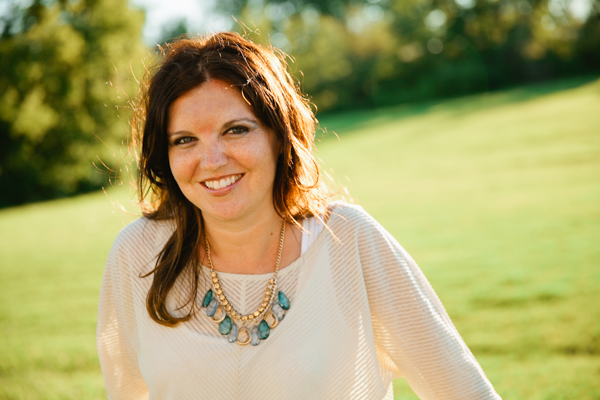It’s easy in photography to get great portraits using natural light. Learning how direct sunlight, diffused sunlight and reflected sunlight look on people and lots of practice in each of these situations is the best way to get consistent, professional-quality portraits. Here are some tips to get you pointed in the right direction.

Sunlight behind the subject keeps shadows off their face. 1/500 sec at f/2.2
1. Get to know your location
First, find out where the sun is. Is it a sunny day? Is it a cloudy day? Which direction are the shadows on the ground? Where is the brightest spot? Where is the darkest spot? After you have assessed the location, your best bet is to find the spot with the brightest diffused or reflected light. You may find diffused light under the shade of a tree or reflected light off the side of a building. Learning to see the intensity of light the way a camera sees it takes some practice, but after a while, you will know which spots work well for portraits.
2. Indoor lighting
Windows can provide great light for natural light portraits. If you are locked into shooting indoors, the first thing you should do is find the windows and see which ones provide the best diffused light. The closer you can get your subject to the window, the brighter and softer it should be.
3. Positioning
Once you have found your spot, have your subject turn around in a circle, 360 degrees. Watch carefully how the light hits their face and in what position it looks best. You want to minimize “raccoon eyes,” where there are dark circles under the eyes and hard shadows under the nose and chin.
If it is a cloudy day or the sun is otherwise diffused, the best position for your subject may be with their face directly toward the sun, to get the maximum amount of light on them. If it is a sunny day, the best position may be with the subject’s back to the sun or with the subject facing whatever reflector you have access to, whether it’s a wall or just a piece of white foamcore board. Just keep an eye out for the best positioning in relation to your light source(s).

Position your subject toward the sun on a cloudy day for the most light. 1/160 sec at f/2.8
4. Reflectors
If you want a little more flexibility in your natural light photography, keep an eye out for natural reflectors or plan to bring one with you. Painted walls (without too much color), white fences, sides of buildings, cars and all sorts of things can act as reflectors to bounce sunlight onto your subject.
If none of these things are available, consider purchasing a photography reflector, which is typically just a piece of white fabric that bounces light. If you are on a budget, a piece of foamcore, white cardboard or even a sheet of paper will also work well. Reflectors can be used as a main light source when placed close to the subject and can be used as a fill light, to fill in shadow areas, when one side is too dark.
5. Lenses
Having a lens with a wide aperture is certainly helpful when using natural light. It gives you a little more latitude in how much light you actually need to get a usable photo. But it is not essential. If you don’t have a wide aperture lens, you also have the option of cranking up your ISO to give you more light sensitivity. If you can afford it, the extra aperture increases your options and gives you a cool, shallow depth-of-field look.
Learn advanced strategies for portraiture in Kirk Tuck’s FREE mini-class Professional Family Portraits.

Share tips, start a discussion or ask one of our experts or other students a question.
No Responses to “Photography Friday: Portraiture Tips for Using Natural Light”